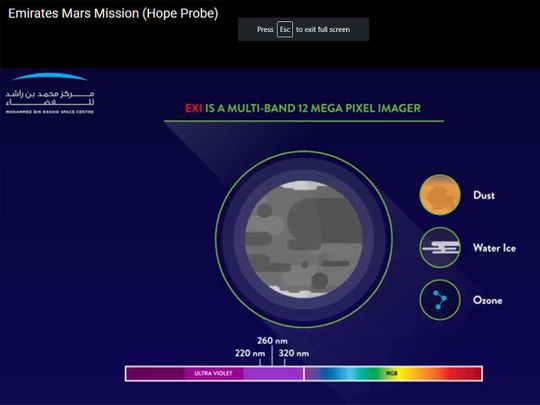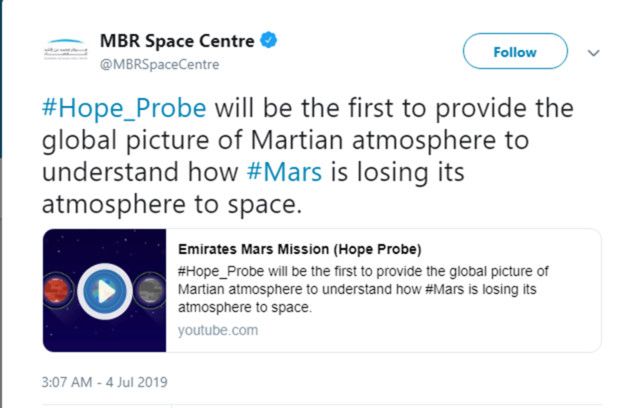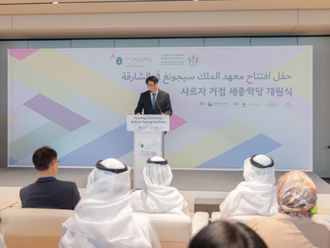
Dubai: A little over a year before its launch to space, the Hope Probe’s capabilities and mission to create mankind’s first integrated model of the Red Planet’s atmosphere were on display during the Emirates Mars Mission (EMM) Science Week session.
The first Arab probe to Mars called ‘Amal’ or Hope in Arabic will be launched next year between July 14 and August 3 from Japan. After approximately 200 days or seven months later, the spacecraft should reach Mars by February 2021 to coincide with the 50th anniversary of the founding of the UAE.
To better understand what the Hope Probe will do once it inserts into the Red Planet’s orbit, the Mohammad Bin Rashid Space Centre (MBRSC) posted a video on its social media channels on Thursday.
The UAE mission to Mars through its spacecraft Hope will be able to observe and investigate Mars’ lower and upper atmosphere simultaneously. It will be able to use observe the planet multiple times of the day to enable “unprecedented observations of the physical process that drive the global atmosphere”.
Understanding the Martian atmosphere will help humans “better understand the changes happening on Earth and in the solar system” since Mars may have been similar to Earth billions of years ago, Omran Sharaf, EMM Project Manager, earlier told Gulf News.
The Hope Probe is a compact, hexagonal spacecraft whose overall size and weight is comparable to a small car. It will have three important instruments that will image the planet in the visible, infrared and ultraviolet wavelengths to provide important atmospheric information that currently “is missing”.
In order to understand the history of Mars’ climate, the Hope Probe will focus on the Martian atmosphere, recording data all daylong including evenings.
So how does the Hope Probe work?
It has three primary instruments that will collect data from the Red Planet.
The Emirates Exploration Imager: a multiband 12MP imager that will capture hi-resolution images of Mars that can also measure the optical depths of dust and water ice in the Martian atmosphere.
Emirates Mars Infrared Spectrometer: will measure the global distribution of key atmospheric parameters over the Martian day and night cycle and year, including dust, ice clouds, water vapour, and temperature profiles.
Emirates Mars Ultraviolet Spectrometer: will measure the changes in the structure of the corona with seasons, solar inputs and lower atmosphere forcing













